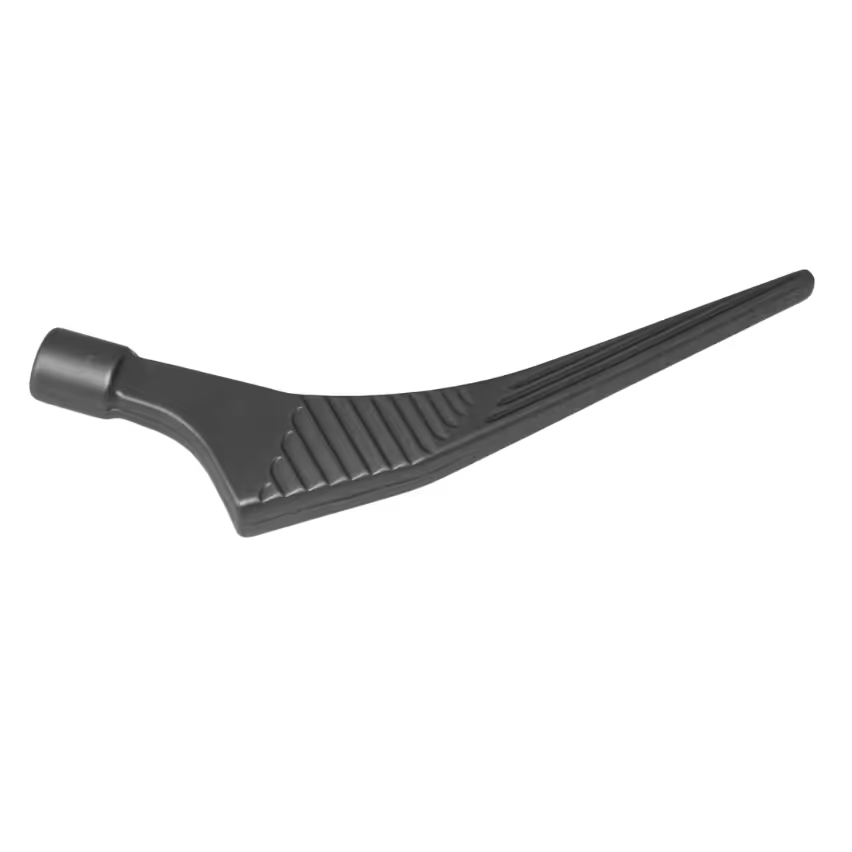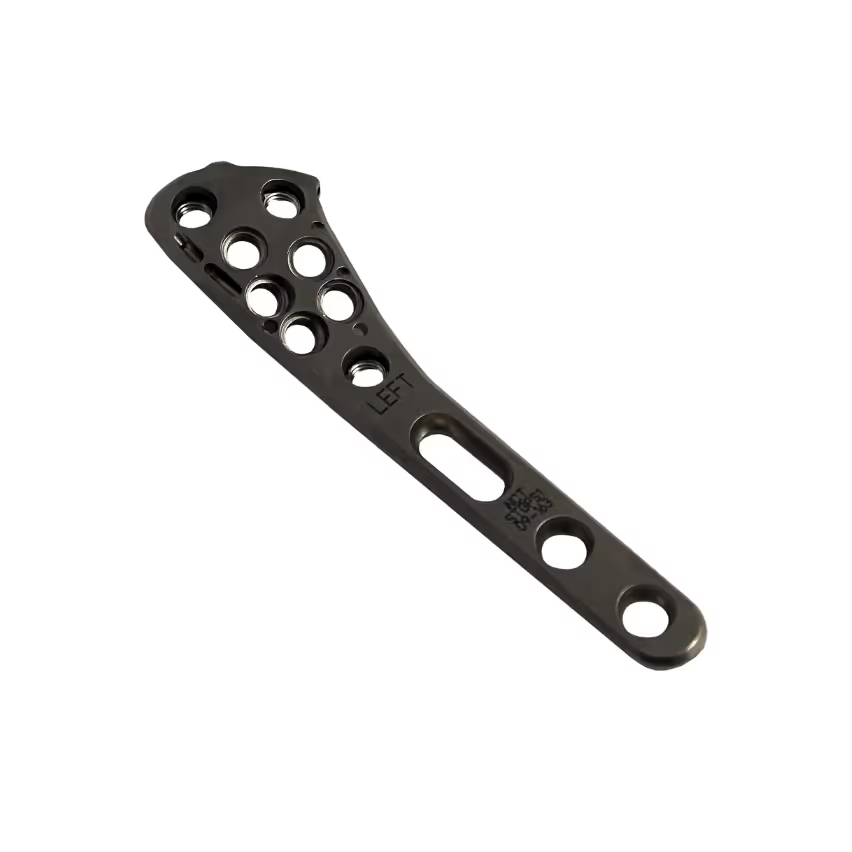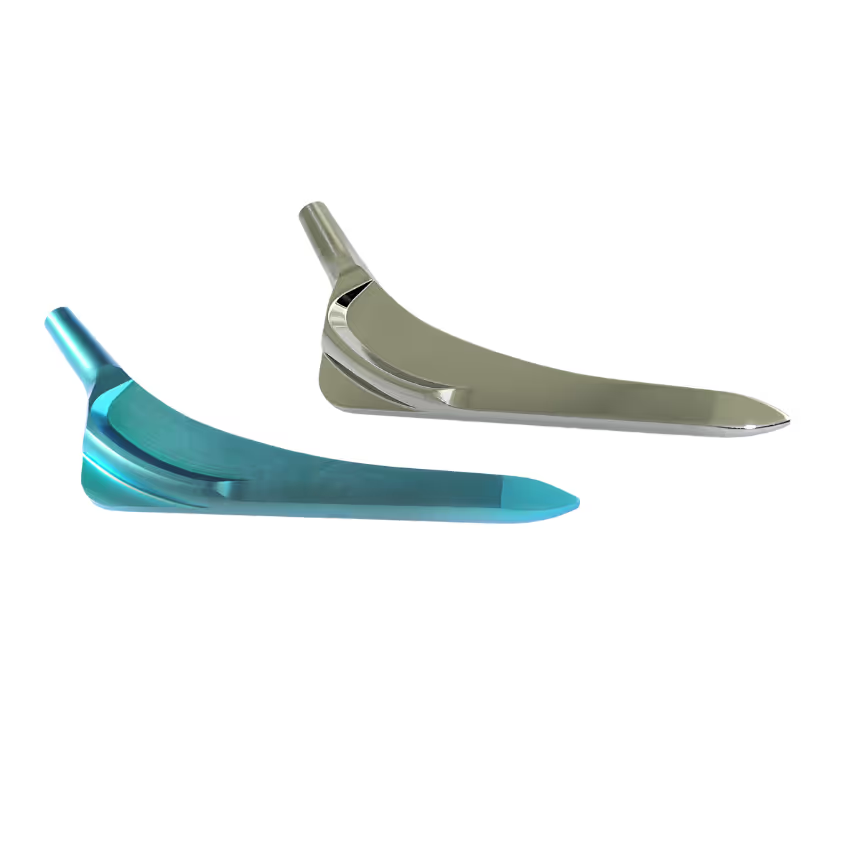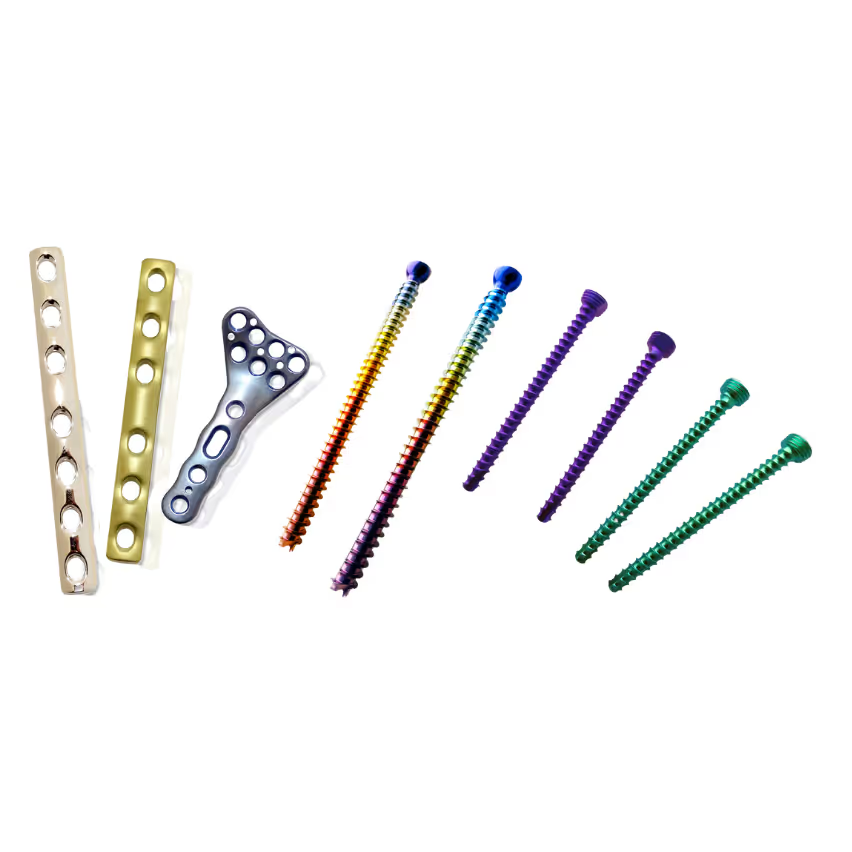Titanium anodizing is an electrochemical process for targeted strengthening of the natural oxide layer on metal surfaces.




In the case of Titanium and Titanium alloys, this process results in improved corrosion and wear resistance as well as — depending on the method — the generation of Interference or gray colors through control of the electrical voltage.
ElpoChem offers various specialized titanium anodizing processes:
Processes:
- Gray anodizing Type II (alkaline, followed by blasting)
- Grey anodizing (acidic, without blasting)
- Color Anodizin Type III
Materials:
- Titanium and Titanium alloys

Titanium hip joint shaft: electropolished (top) color-anodized (bottom)
ElpoLux ANOF-A Titanium Anodizing Type II
ElpoLux Anox-C Titanium Anodizing Type III
Titanium is a lightweight yet extremely strong metal with excellent corrosion resistance. It is primarily used in the aerospace industry, apparatus engineering, and medical technology. In addition to conventional processes such as pickling, chemical deburring, and electropolishing, titanium can also be anodized to achieve targeted functional or decorative surface properties. Two main variants are distinguished: color anodizing and gray anodizing.
In color anodizing, the natural oxide layer of approximately 4–6 nm is increased to up to 100 nm. Depending on the layer thickness, brilliant colors are created through interference effects, generated solely by light refraction in the oxide layer without pigments.
The color can be precisely controlled via the applied electrical voltage – typically between 10 V and 120 V. This technique is used both for decorative purposes (e.g., in the jewelry industry) and for identification purposes in medical technology.
For color anodizing, ElpoChem uses acidic electrolytes that ensure uniform layer formation and brilliant coloration.
In gray anodizing, oxide layers with a thickness of up to 1–2 µm are generated. These layers primarily serve to improve the corrosion and wear resistance of titanium surfaces.
Two process variants are available:
Alkaline Gray Anodizing: Generates homogeneous layers at voltages of 60–150 V. After the process, the workpiece is blasted to achieve a uniform, matte surface.
Acidic Gray Anodizing: Also works with voltages of 80–150 V, but requires no subsequent blasting. This process offers excellent surface homogeneity with simultaneously reduced process time.
Both variants deliver gray, uniformly structured titanium surfaces characterized by high durability and an elegant appearance.
- Increased corrosion and wear resistance
- Generation of decorative or functional color without pigments or paint
- Chemically stable, homogeneous surfaces
- Improved adhesion for coatings or adhesive bonds
- Precisely controllable layer thicknesses and color intensities
- No mechanical or thermal stress on the workpiece
ElpoChem offers a comprehensive range of services for chemical and electrochemical surface treatment of titanium – from analysis through consultation to delivery of all required process chemicals.
Customers benefit from:
- Individual process consulting and development
- Analyses and quality controls in the company's own laboratory
- Delivery of all electrolytes and auxiliary chemicals
- Technical support and on-site support

Titanium anodizing enables defined, functional, and optically high-quality surfaces characterized by longevity, durability, and color diversity. Whether in medical, industrial, or decorative applications – ElpoChem delivers the appropriate process for every application purpose.
Find the right process for your application – customised
to your industry, material and production environment.
.avif)
Processes for implants and instruments: metallically pure, passive, burr-free, and biocompatible
.avif)
Reliable finishing solutions for high-volume metal component production

Electrochemical and chemical processes for polishing, deburring and passivating of complex components
.avif)
Process solutions for functional and decorative components in locking technology.

High-precision surface finishing for functional and aesthetic requirements
.avif)
Finishing Process for components in spinning and weaving technology for thread-safe smoothness